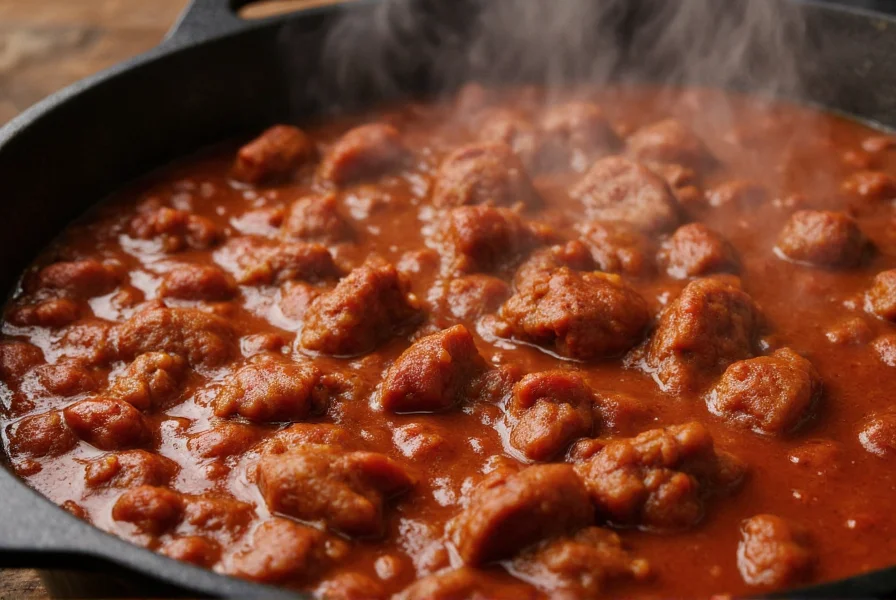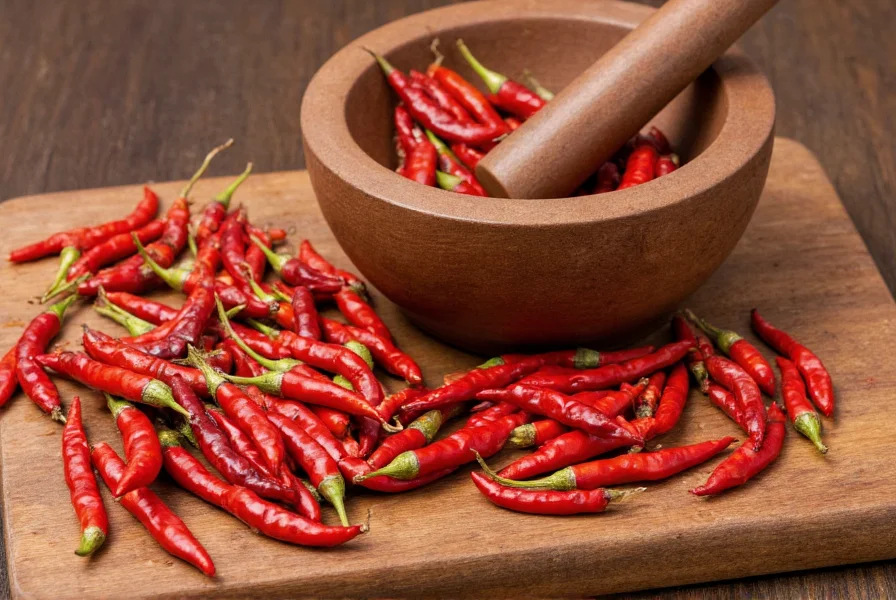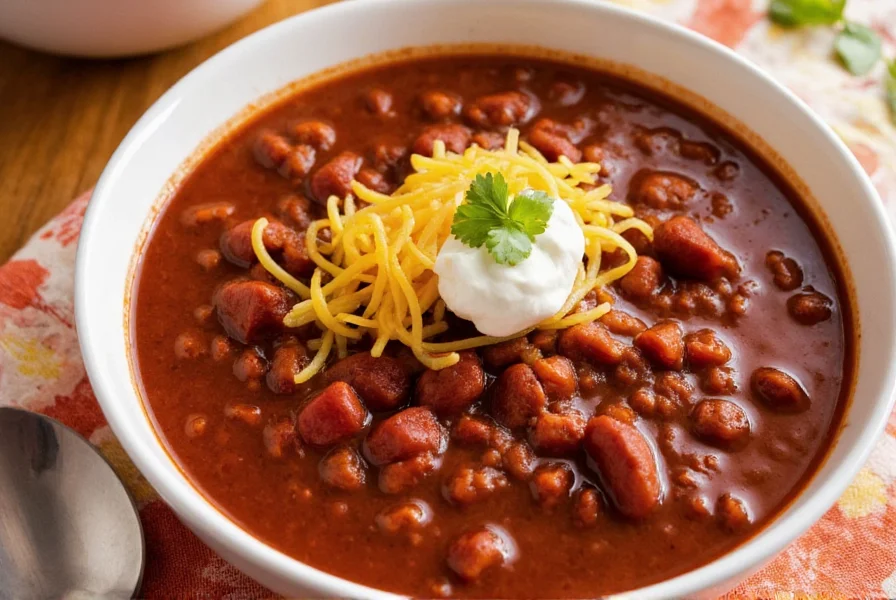America's relationship with chili peppers spans centuries, beginning with Native American cultivation long before European contact. Today, chili peppers feature prominently in regional American cooking, from the smoked chipotles in Southwestern cuisine to the cayenne-based hot sauces of the South. Understanding which chili varieties work best in traditional American recipes can transform your cooking from ordinary to authentic.
The Regional Landscape of American Chili Cuisine
Chili peppers aren't just about heat—they contribute complex flavors that define regional American dishes. The United States has developed distinct chili traditions based on local growing conditions and cultural influences. While many associate "chili" solely with chili con carne, American culinary traditions incorporate numerous chili varieties in creative ways.
| Region | Signature Chili Varieties | Iconic Dishes | Flavor Profile |
|---|---|---|---|
| Southwest | New Mexico chilies, Anaheim, Jalapeño | Green chili stew, Chile Relleno Casserole | Earthy, smoky, moderate heat |
| Texas | Cayenne, Chipotle, Guajillo | Chili con carne, Barbecue spice rubs | Deep, rich, varying heat levels |
| Southern | Cayenne, Tabasco, Serrano | Nashville hot chicken, Louisiana hot sauce | Sharp, bright, intense heat |
| Midwest | Chipotle, Ancho, Cayenne | Cincinnati chili, Chicago-style hot dogs | Complex, sweet-heat balance |
Five Authentic American Recipes Featuring Chili Peppers
1. Texas-Style Chili Con Carne (No Beans)
Authentic Texas chili focuses on meat and chili peppers, with no beans allowed in traditional preparations. The key is using a blend of dried chilies that create a rich, complex base.
Ingredients:
- 2 lbs beef chuck, cut into 1-inch cubes
- 4 dried New Mexico chilies
- 2 dried guajillo chilies
- 1 dried ancho chili
- 1 onion, chopped
- 3 cloves garlic, minced
- 2 tbsp cumin
- 1 tsp oregano
- Salt to taste
- 2 cups beef broth
Method: Toast dried chilies in a dry skillet until fragrant. Remove stems and seeds, then soak in hot water for 20 minutes. Blend soaked chilies with 1 cup broth to create smooth sauce. Brown beef in large pot, then add chili sauce, remaining broth, onion, garlic, and spices. Simmer covered for 2-3 hours until beef is tender.

2. Nashville Hot Chicken
This fiery Tennessee specialty features chicken coated in a cayenne-based paste that delivers intense heat balanced with spices.
For the paste: Combine 1/2 cup cayenne pepper, 1/4 cup brown sugar, 2 tbsp paprika, 1 tbsp garlic powder, 1 tbsp ginger powder, 1 tsp cayenne pepper, and 1 cup hot frying oil. After frying chicken, brush generously with this paste.
3. Cincinnati Three-Way Chili
Unlike Texas chili, Cincinnati-style features a thinner, sweeter chili served over spaghetti with a mound of cheddar cheese.
Key ingredients: Ground beef, tomato sauce, cinnamon, allspice, Worcestershire sauce, and cayenne pepper. The distinctive flavor comes from Mediterranean spices combined with chili heat.
Working Effectively with Chili Peppers in American Cooking
Understanding how to handle different chili varieties makes a significant difference in your American recipes that use chili. Here are professional techniques:
- Heat control: Remove seeds and white membranes for milder heat; include them for maximum spice
- Toasting dried chilies: Briefly toast in dry skillet to enhance flavor complexity before rehydrating
- Substitutions: When specific American chili varieties aren't available, understand flavor profiles (New Mexico chilies = earthy; cayenne = sharp heat)
- Timing: Add fresh chilies late in cooking for brighter flavor; dried chilies early for deeper integration
Avoiding Common Mistakes with American Chili Recipes
Many home cooks make these errors when preparing traditional American recipes featuring chili peppers:
- Using only one chili variety when traditional recipes call for blends
- Overcooking fresh chilies, causing bitterness
- Not adjusting recipes for regional chili heat variations (New Mexico chilies can range from mild to hot)
- Using generic "chili powder" instead of specific dried chilies for authentic American dishes
- Adding dairy too early when trying to reduce heat (wait until serving)
Preserving the Flavor of Chili in American Dishes
Proper storage maintains the distinctive qualities of chili-based American recipes:
- Chili con carne freezes exceptionally well for up to 3 months
- Chili oils should be stored in dark glass bottles away from light
- Dried chilies maintain best flavor when stored in airtight containers in the freezer
- Refrigerate cooked chili dishes for up to 4 days for optimal flavor retention

Frequently Asked Questions
What's the difference between chili powder and using whole chilies in American recipes?
Chili powder is typically a blend of ground chilies and other spices, while whole dried chilies offer more complex, nuanced flavors. Authentic American regional recipes often specify particular dried chilies (like New Mexico or Ancho) because each contributes unique flavor notes beyond just heat. For the most authentic American recipes that use chili, toasting and rehydrating whole dried chilies creates a superior base compared to pre-made chili powder.
Can I make traditional American chili recipes less spicy without losing authenticity?
Yes, authentic American chili recipes can be adjusted while maintaining regional character. For Texas chili, reduce the number of hotter chilies like cayenne while maintaining the base of milder New Mexico chilies. In Nashville hot chicken, decrease the cayenne but maintain the brown sugar and spice balance. The key is preserving the flavor profile while adjusting heat—many traditional American recipes featuring chili were originally prepared with heat levels suited to local palates.
Which American regional cuisine uses the most diverse varieties of chili peppers?
Southwestern American cuisine, particularly New Mexican cooking, features the greatest diversity of chili varieties. New Mexico alone has specific regional varieties like Hatch chilies that change flavor profile based on where they're grown along the Rio Grande valley. Traditional New Mexican green chili stew might use fresh Hatch green chilies, while red chili dishes use the same variety when fully ripened and dried. This regional specificity creates more nuanced American recipes that use chili than other areas of the country.











 浙公网安备
33010002000092号
浙公网安备
33010002000092号 浙B2-20120091-4
浙B2-20120091-4